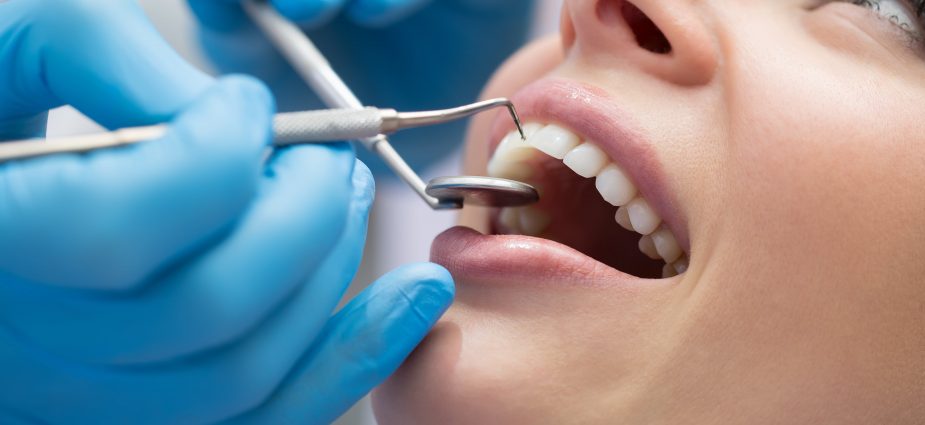General Dentists and Restorative Procedures

General dentists serve as your first line of defense against oral health problems. Although general dentists provide primarily preventative care and minor restorative therapy, they often are able to perform a wide array of dental procedures, including cosmetic treatments.
Although general dentists typically forgo postgraduate dental specialist education programs, their training does not necessarily end with dental school. General dentists acquire additional dentistry education by attending lectures and participating in hands-on workshops provided by continuing education programs. Therefore, general dentists who opt to enter into practice rather than attend specialized postgraduate training programs may still gain an advanced dental education beyond that associated with DDS and DMD degrees.
General dentists who do not perform a given treatment will provide you with a specialist referral.
Restorative Procedures
During a dental examination your dentist will use instruments, tests, radiographs and clinical expertise to diagnose potential or existent disease states and pathologies. The general dentist’s primary focus is on the oral cavity, head and neck. An individualized plan is developed to prevent or treat disease states of the oral cavity. In the case of cosmetic dentistry, your general dentist will work with you to identify your esthetic goals.
Dental Fillings: Dental fillings are used to repair damage to the structure of a tooth or teeth. Structural damage can be caused as a result of tooth decay, wear or trauma. After the removal of a problematic tooth structure, the tooth is restored with one of several filling materials: gold, amalgam, composite resin (white filling material) or porcelain. Each filling material has its advantages and disadvantages. Your dentist will work with you to determine which material is appropriate for you. (Read more about dental fillings)
Bonding: Bonding is the term used to describe the process of using composite resins to “glue” materials to the surface of a tooth for restorative purposes. Chipped or cracked teeth are typically repaired through bonding. An enamel-like composite material is applied to the surface of a tooth, sculpted into shape, contoured and polished, making the crack or chip invisible. (Read more about bonding)
Orthodontics: Misaligned teeth and malocclusions can be straightened and corrected with dental braces and retainers. Orthodontics is both a functional and cosmetic treatment, and has become an increasingly popular field of dentistry. (Read more about orthodontics)
Root Canals: Root canal therapy removes infected pulp tissue within the root chamber of the tooth. The hollowed-out tooth is filled with an antibacterial filling, and the tooth is “capped” with a crown for protection. Endodontists specialize in performing root canal therapy, though general dentists also often perform the restorative procedure. (Read more about root canal therapy)
Dental Crowns: Dental crowns can repair extensively decayed or damaged teeth. Dental crowns can be made of gold metals, silver metals, porcelain or a combination of porcelain and metal. Some dentists use CAD/CAM technology for the fabrication of dental crowns. In some cases, conservative dental veneers may replace the need for a dental crown. General dentists, family dentists, prosthodontists, pediatric dentists and cosmetic dentists may perform the crown procedure; however, expertise varies among dentists. (Read more about dental crowns)
Dental Bridges: Dental bridges replace missing teeth with artificial replacements (pontic). The pontic is held in place by composite materials that are anchored to surrounding teeth. General dentists, family dentists, prosthodontists and cosmetic dentists may perform bridge procedures. Availability of the latest materials, technology and expertise varies among dentists. (Read more about dental bridges)
Dentures: Dentures are used to replace missing teeth or damaged teeth that cannot be otherwise repaired. General dentists, family dentists, prosthodontists, and cosmetic dentists may perform the procedure. However, availability of the latest material, technology and expertise varies among dentists. (Read more about dentures)
Oral and Maxillofacial Procedures: Oral and maxillofacial procedures range from the less invasive treatment of abnormalities of the mouth, jaw and face – including accompanying structures such as the teeth – to major oral surgeries. Dental implants, TMJ (temporomandibular joint) procedures, reconstructive surgery and cleft lip and palate procedures also fall under the oral and maxillofacial category. (Read more about oral and maxillofacial procedures)
Periodontal Treatment: Early gum disease treatment may include tooth scaling and cleaning at three-month intervals along with use of medicated mouthwash and proper flossing. Later-stage gum disease treatment may include deep-plane scaling, periodontal surgery and laser surgery. General dentists, family dentists, periodontists and cosmetic dentists may perform gum disease treatment. However, availability of the latest material, technology and the level of expertise varies among dentists. (Read more about periodontal treatment)
Laser Procedures: In some cases, laser dentistry can replace the need to drill teeth or to use other, more invasive dental equipment. Dental lasers can be used during a bonding procedure and to remove tooth decay, replace scaling, perform periodontal surgery, enhance tooth whitening and treat some forms of sleep apnea. General dentists, family dentists, periodontists and cosmetic dentists may perform laser dentistry. Availability of the latest technology varies among dentists. (Read more about laser dentistry)
Special treatment considerations are made for infants, young children, adolescents, people with special needs and the elderly.


